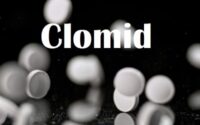Nolvadex
 What is Nolvadex?
What is Nolvadex?
Nolvadex, also known by its generic name Tamoxifen, is a medication that has woven itself into the fabric of medical treatment, standing as a beacon of hope for many, especially in the realm of breast cancer treatment. This substance, beyond its chemical compounds and pharmaceutical classifications, represents a pinnacle of modern medicine’s journey towards understanding and combating one of the most daunting health challenges faced by humanity.
At its core, Nolvadex is an antagonist of the estrogen receptor in breast tissue. It operates under a class of medications known as selective estrogen receptor modulators (SERMs). Its function may seem paradoxical at first glance — it blocks the activity of estrogen in the breast tissue, yet it can also act as an estrogen agonist in other parts of the body, like the bones and the endometrial tissue. This dual ability makes Nolvadex a compound of choice for various therapeutic applications, most notably in the treatment of hormone receptor-positive breast cancer in both men and women.
Breast cancer, a disease marked by the malignant growth of breast cells, often finds a friend in estrogen, a hormone that can fuel the proliferation of these cancerous cells. Nolvadex steps into this fray, acting as a formidable foe against estrogen by attaching itself to estrogen receptors, thereby blocking estrogen’s ability to stimulate the growth of these malignant cells. In doing so, it not only halts the progression of breast cancer but can also play a role in prevention, offering a shield to those at high risk of developing the disease.
Most importantly
Moreover, Nolvadex’s capabilities stretch beyond the treatment and prevention of breast cancer. Its beneficial effects on bone density make it a helpful ally in combating osteoporosis, a condition where bones become fragile and more likely to fracture, often exacerbated by low estrogen levels post-menopause. By acting as an estrogen agonist in bones, Nolvadex helps in preserving bone density, offering another layer of benefit beyond its anti-cancer properties.
Yet, the narrative of Nolvadex is not without its complexities and nuances. While it presents a ray of hope, it also carries with it a specter of potential side effects and risks. Among these, the most notable are the increased risks of endometrial cancer and thromboembolic events, such as deep vein thrombosis (DVT) and pulmonary embolism, due to its estrogen-agonist effects in other parts of the body. These side effects underscore the importance of careful patient selection, monitoring, and the delicate balance physicians must maintain while administering this powerful medication.
Navigating the landscape of Nolvadex treatment requires a comprehensive understanding of the individual patient’s health profile, including their specific type of breast cancer, hormone receptor status, and overall health. This bespoke approach to treatment, tailoring the use of Nolvadex to fit the unique needs of each patient, exemplifies the art and science of modern medicine.
Nolvadex embodies the relentless pursuit of medical advancements against a disease that has touched countless lives across the globe.
Nolvadex, with its dual role as both a warrior against breast cancer and a guardian of bone density. Represents a critical tool in the medical arsenal against disease. As research continues to evolve, the role of Nolvadex in treatment regimens may shift, but its legacy as a pioneering force in the battle against breast cancer will undoubtedly endure.


